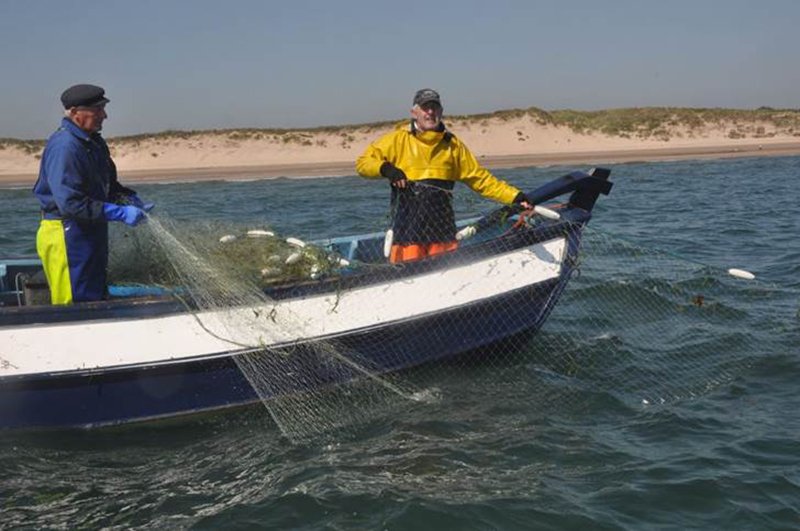22 September 2014
An NFFO delegation took part in a recent meeting in Brussels, between European Commission officials and UK drift net interests, to discuss the Commission’s proposal for a total prohibition on drift nets.
Summary
Given the clear shortcomings in the preparation and
consultation on this proposal, and the overwhelming opposition from the fishing
sector, advisory councils, member states and even some NGOs, it is clear that a
major error and misjudgement has been made, probably because of an undue focus
on specific bycatch problems in the Mediterranean. The purpose of the meeting
was to spell out the consequences of a ban for UK fishermen if it was to go
ahead.
The clear message received from the Commission
was that, although there is absolutely no prospect that the ban would come into
effect on 1st January 2015, the proposal would now be sucked into
the tortuous co-decision process in which the Council of Ministers and the
European Parliament will decide its fate.
The importance of
small-scale drift net fisheriesThe NFFO led the industry presentations with
an overview of the importance of small-scale drift net fisheries for the several
hundred fishermen who are dependent on the method for part or all of their
annual income. Drift net fisheries for salmon, trout, herring, mackerel, bass,
sardine, mullet and a range of other species were described. The Federation
emphasised that:
- These were the kind of sustainable small-scale fisheries which should be
supported not prohibited
- There had been clear weaknesses in the
Commission’s consultation process to the extent that they it had failed to
appreciate the scale and nature of our small-scale drift net fisheries
- The Commission’s own report, undertaken by
independent consultants MRAG, had concluded:
•That there was no evidence to suggest that drift
nets had bycatches that are significant, or exceed bycatch rates found in other
passive net fisheries
•That the lack of information on these fisheries
was in part because they are small and considered by the authorities to
represent a low risk to the environment, protected species or habitats
•There is no guarantee that a blanket ban of
drift nets would represent a gain for the environment given displacement into
other less benign fishing methods
•That a risk-based and targeted approach rather
than a blanket ban would be the appropriate management response where bycatch
rates are considered unacceptable
- The advisory councils had unanimously rejected
the blanket ban and had asked why the new scope for a regional approach, in
line withthe reformed CFP had not been employed
- 13 out of 15 member states had already voiced
opposition to the ban
Examples
To illustrate its arguments, the industry delegation was
able to provide detailed descriptions of small scale drift net fisheries in the
UK, including:
•The Clovelly herring fishery
•The Yorkshire and Northumbria drift net fishery
for salmon
•The South East drift net fishery for sole
•The Thames herring fishery
•The South Coast and South East bass fishery
•The Mourne herring fishery
These and other examples made clear that this relatively
benign form of fishing had been caught up inadvertently in the Commission’s
proposed ban, the real focus which was problems in enforcing the existing rules
in the Mediterranean and Black Sea.
What now?
It was made clear that the Commission will not be withdrawing
its proposal on the grounds that this “would be discourteous to the
co-legislators.” The Commission is however, clearly embarrassed at the failures
of its own systems and is looking for ways to climb out of the tree in which it
is stuck. Member states and the European Parliament may delay, amend, or block the proposal as it goes through the
co-decision processing trilateral discussions with the Commission. This will
clearly involve the NFFO and its allies in extensive lobbying work to ensure
that the legislators are aware of the facts about small-scale drift net fishing
in the UK.
One lesson learnt from this debacle in that even small,
benign,fisheries like these can become victims of the bureaucratic machine if
there is insufficient data available about them to put up a robust defence.
The real lesson however lies with the Commission. We had
thought that the reformed CFP had meant an end to this type of inadequately
prepared, blunt measure, which invariably deliver much less that they promise,
and frequently generate unwelcome unintended consequences. Regionalisation was
supposed to provide an alternative to the forlorn hope that a relatively small,
remote, civil service based in Brussels could ever successfully manage the many
diverse fisheries in EU waters. The drift net ban proposal is the clearest
possible example of the folly of this type of blunt, top-down centralised approach in fisheries management.

